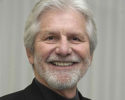An essential education for all students
By Terry O’Banion
February 14, 2019
Why curricular reform must be a priority.
This decade has been one of the most reform-rich periods in the history of higher education, especially in the community college sector. With major funding from foundations and substantive research from centers and institutes, a national consensus has emerged about the importance and urgency of reform. Dozens of state and national initiatives have been launched to study and recommend changes in policies, programs, practices and personnel.
The community college has been at the center of these reform efforts clustered around what has become the overarching mission of the contemporary community college endorsed by former President Obama, a number of leading foundations, national organizations such as the American Association of Community Colleges and the Association of Community College Trustees, and hundreds of community colleges. That overarching mission purports to double the number of students who by 2020 earn one-year certificates, associate degrees, or who transfer to a university. Unfortunately, the year 2020 is just a little more than one year away, and there is no possible way that particular goal can be met.
One of the reasons we will not meet that goal is that reformers failed to include major curriculum reform as a priority. There has been some dabbling in curricular reform: new pathways in math and accelerated courses in developmental education have proven somewhat effective; contextual education illustrated by the I-Best program in Washington State is expensive but has had some success; and guided pathways urge an examination of the curriculum to ensure students are taking the right courses to completion. But there has not been in this explosion of reform efforts any major and substantive national initiatives to reform the curriculum.
The division between liberal arts and workforce education is quite visible in the structures and policies of community colleges where there are separate divisions, separate faculty groups, separate facilities, separate degrees, separate curricula and separate funding. The community college has embedded this historical divide into its structures and policies further making it difficult to reform this complex issue.
The Cafeteria Curriculum
Tom Bailey and his colleagues at the Community College Research Center in their seminal work, Redesigning America’s Community Colleges, identified the “cafeteria curriculum” as a major barrier to student success noting that “…. The general studies curriculum is perhaps the most confusing and complex program for students to navigate.” Almost every community college in the nation lists a general education or core curriculum in the catalog following this statement: “The Core Curriculum is a set of courses that provides the knowledge, skills, and educational experiences needed to succeed in higher education.”
The curriculum is supposed to be the collective wisdom and expertise of the faculty about what is important for students to learn. And, if these examples of a core curriculum are repeated in other community colleges (and they are), faculty should be ashamed of the monster they have created. Students cannot navigate through these jungles; and advisors cannot possibly guide students through these pathways of fractured, incoherent, programs that lack integrity.
An Essential Education
For those college leaders considering curricular revision or reform, there is a new curricular paradigm: an Essential Education. It is defined as an integrated core of learning that includes and connects the key components from liberal education and workforce education to ensure that a student is equipped to earn a good living and live a good life. It is a quality education essential to all students. An Essential Education is what some advocates have identified as a liberal career education or a practical liberal education.
And there are plenty of clues to the nature of that curriculum. Advocates of liberal education and of workforce education have been moving closer and closer to a curriculum that unifies their key missions. Most advocates from both sides will agree that all students need skills and knowledge in problem solving, critical thinking, teamwork and collaboration, and communication—cross cutting skills necessary for students who want to succeed in higher education and in life. They are the “soft skills” that should become the hardcore of a new Essential Education. The next step is a brief leap to creating a core curriculum of these four key skills. Four three-hour credit courses as stand-alone courses or combined in a 12-credit Learning Community is one model of an integrated curriculum. Some colleges will add core courses in diversity, global awareness, and information technology.
Core courses are more manageable for everyone, and they are easier to explain to students. If faculty from liberal education and from workforce education can agree on the common elements of core courses and construct content and teaching strategies that apply to the courses, we stand a good chance of creating an integrated curriculum that will help our students make a good living and live a good life.



